
Welcome to the professional physiotherapy clinic
- Home
- Blog
Understanding Shockwave Therapy: What It Is and How It Works
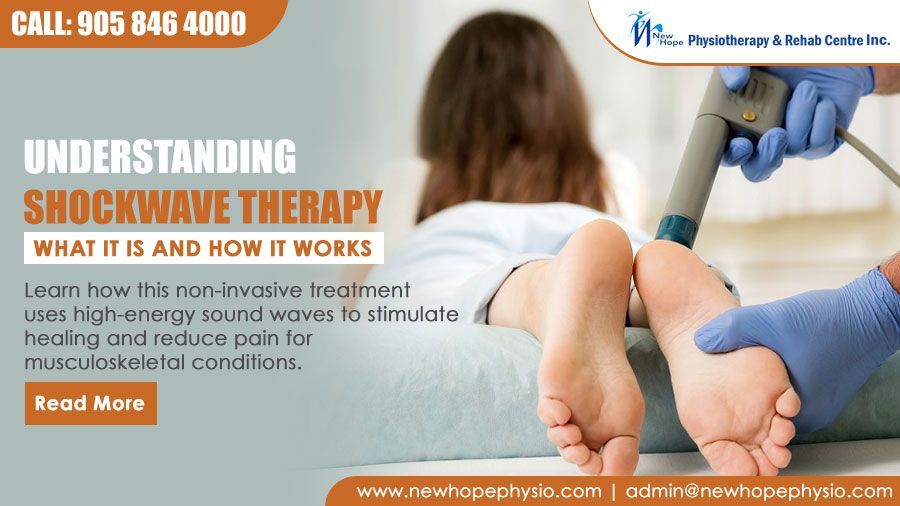 11 May 2023
11 May 2023
Understanding Shockwave Therapy: What It Is and How It Works
Understanding Shockwave Therapy: It is a non-invasive treatment option that has gained popularity in recent years for its effectiveness in treating a variety of conditions. This therapy uses high-energy sound waves to stimulate healing in injured or damaged tissues. Shockwave therapy was originally developed to treat kidney stones, but has since been found to be beneficial in treating a wide range of conditions such as plantar fasciitis, tennis elbow, and Achilles tendonitis. In this blog post, we will explore what shockwave therapy is, how it works, what conditions it can help with, and who can benefit from this treatment option.
What is Shockwave Therapy?
Shockwave therapy is a non-invasive treatment that uses high-energy sound waves to stimulate the body’s natural healing response. The sound waves, also known as shockwaves, are directed at the affected area of the body to promote healing and reduce pain. Shockwave therapy can be delivered in two different forms: radial and focused.
Radial shockwave therapy, also known as extracorporeal shockwave therapy (ESWT), uses a handheld device that delivers low to medium energy waves over a larger area. This type of therapy is often used to treat soft tissue injuries, such as tendinitis or plantar fasciitis.
Focused shockwave therapy, also known as extracorporeal pulse activation therapy (EPAT), uses a more targeted approach by delivering high-energy waves directly to the affected area. This type of therapy is often used to treat bone injuries, such as stress fractures.
Both forms of shockwave therapy are non-invasive, meaning that there is no need for surgery or injections. The treatment is typically performed on an outpatient basis and requires little to no downtime, making it a popular option for those who want to avoid more invasive procedures.
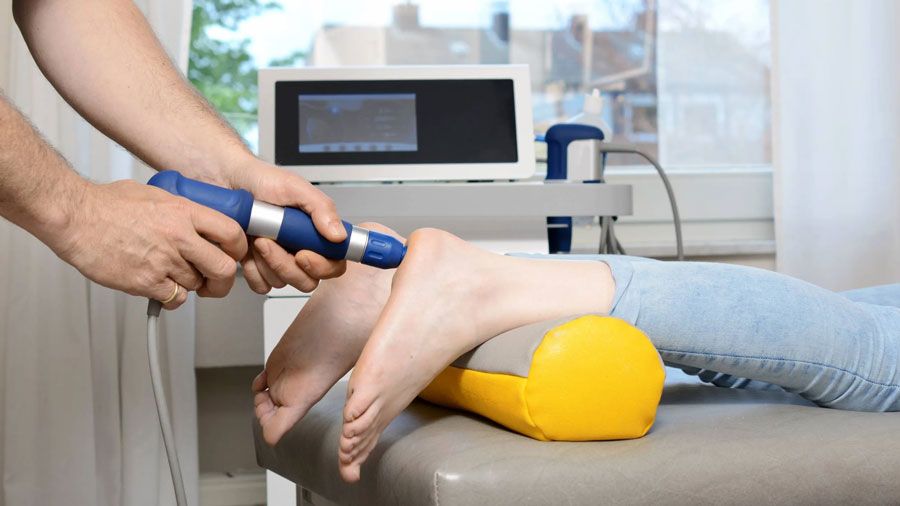
How Does Shockwave Therapy Work?
Shockwave therapy works by promoting the body’s natural healing response through the use of high-energy sound waves. The sound waves penetrate the affected tissues, stimulating the cells and promoting increased blood flow to the area. This increased blood flow helps to accelerate the healing process and reduce pain.
There are several mechanisms of action by which shockwave therapy works:
1. Neovascularization:
Shockwave therapy promotes the formation of new blood vessels, which helps to increase blood flow to the affected area. This increased blood flow brings oxygen and nutrients to the damaged tissue, promoting healing.
2. Cellular Stimulation:
The sound waves from shockwave therapy stimulate the cells in the affected tissue, promoting the production of growth factors, which are essential for tissue regeneration and healing.
3. Pain Reduction:
Shockwave therapy can help to reduce pain by stimulating the production of endorphins, which are the body’s natural painkillers.
4. Breaking Up Calcifications:
In certain conditions, such as plantar fasciitis or tendinitis, shockwave therapy can help to break up calcifications or scar tissue in the affected area, which can relieve pain and improve mobility.
5. Trigger Point Release:
Shockwave therapy can be effective in releasing trigger points, which are knots of tight muscle fibers that can cause pain and restrict range of motion. By stimulating blood flow to the affected muscle, shockwave therapy can help to release these trigger points and alleviate pain.
6. Increased Metabolism:
Shockwave therapy has been shown to increase cellular metabolism in the affected area, which can help to speed up the healing process. This increased metabolism helps to break down damaged tissue and stimulate the production of new tissue.
7. Reduced Inflammation:
Inflammation is a natural response to injury, but it can also contribute to pain and slow down the healing process. Shockwave therapy has been shown to reduce inflammation by increasing blood flow to the affected area and promoting the production of anti-inflammatory molecules.
By combining these mechanisms of action, shockwave therapy can be an effective treatment option for a variety of conditions, including musculoskeletal injuries, chronic pain, and certain bone disorders. However, it’s important to note that while shockwave therapy can be effective, it may not be appropriate for everyone and should always be performed by a qualified healthcare professional.
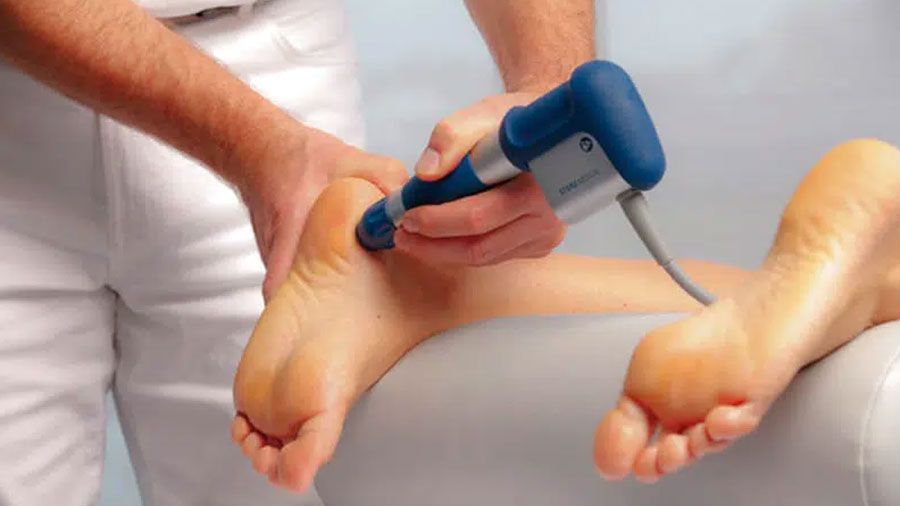
What Conditions Can Shockwave Therapy Help With?
Shockwave therapy can be used to treat a wide range of musculoskeletal conditions, including:
1. Plantar Fasciitis:
Shockwave therapy can be an effective treatment for plantar fasciitis, a common condition that causes heel pain. By promoting blood flow to the affected area and breaking up calcifications, shockwave therapy can help to relieve pain and improve mobility.
2. Tendinitis:
Tendinitis is an inflammation of a tendon, which can cause pain and restrict movement. Shockwave therapy can be effective in reducing pain and promoting healing in conditions such as Achilles tendinitis, rotator cuff tendinitis, and tennis elbow.
3. Muscle Pain:
Shockwave therapy can be effective in treating muscle pain and tightness by promoting blood flow to the affected area and releasing trigger points.
4. Bone Fractures:
Focused shockwave therapy can be used to promote bone healing and reduce pain in certain types of fractures, such as stress fractures.
5. Joint Pain:
Shockwave therapy can be effective in reducing pain and promoting healing in conditions such as osteoarthritis and frozen shoulder.
6. Chronic Pain:
Shockwave therapy can be effective in reducing chronic pain in conditions such as fibromyalgia and myofascial pain syndrome.
7. Erectile Dysfunction:
Shockwave therapy has also been used as a treatment option for erectile dysfunction by promoting increased blood flow to the penis.
Overall, shockwave therapy can be an effective non-invasive treatment option for a variety of musculoskeletal conditions. However, it’s important to note that not all patients are suitable candidates for shockwave therapy, and it should always be performed by a qualified healthcare professional.

What are the Benefit of Shockwave Therapy
Shockwave therapy can offer several potential benefits for individuals seeking non-invasive treatment for musculoskeletal conditions, including:
1. Non-Invasive:
Shockwave therapy is a non-invasive treatment option that does not require incisions or anesthesia. This means that there is no risk of infection or scarring associated with the treatment.
2. Reduced Pain:
Shockwave therapy has been shown to be effective in reducing pain in a variety of conditions, including plantar fasciitis, tendinitis, and muscle pain. By stimulating the body’s natural healing processes, shockwave therapy can help to alleviate pain and improve mobility.
3. Increased Mobility:
By promoting healing and reducing pain, shockwave therapy can help to improve range of motion and mobility in the affected area.
4. Faster Recovery:
Shockwave therapy can help to accelerate the body’s natural healing processes, leading to a faster recovery time and a quicker return to activities of daily living.
5. Minimal Side Effects:
Side effects associated with shockwave therapy are typically mild and temporary, and may include bruising, swelling, or numbness in the treated area.
6. Cost-Effective:
Shockwave therapy can be a cost-effective treatment option compared to more invasive procedures, such as surgery.
7. Avoidance of Medications:
Shockwave therapy can help to reduce the need for pain medications or corticosteroid injections, which can have side effects and long-term consequences.
Overall, shockwave therapy can be a safe and effective treatment option for individuals with certain musculoskeletal conditions. However, it’s important to note that not all patients are suitable candidates for shockwave therapy, and it should always be performed by a qualified healthcare professional.
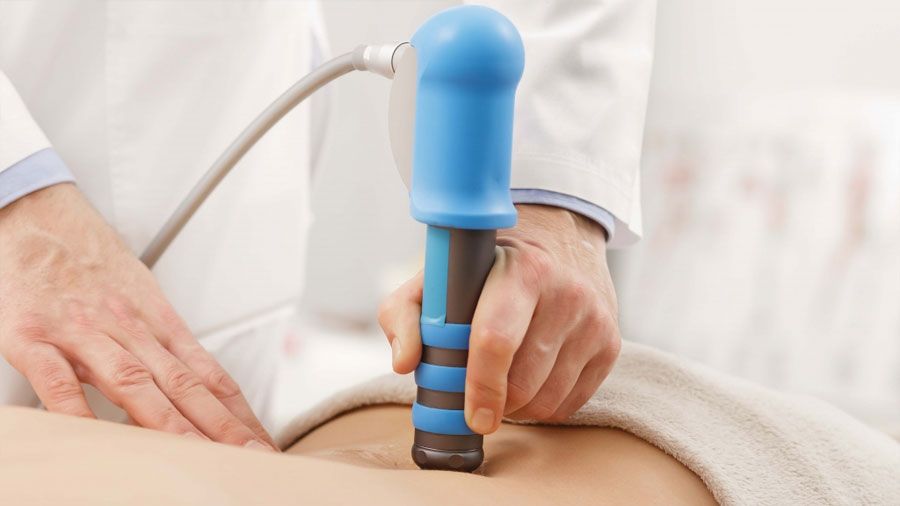
The Shockwave Therapy Treatment Process
The process of receiving shockwave therapy treatment typically involves the following steps:
1. Initial Consultation:
The first step in the shockwave therapy treatment process is an initial consultation with a healthcare professional. During this consultation, the healthcare professional will evaluate your medical history, symptoms, and any imaging studies (such as X-rays or MRIs) to determine whether you are a suitable candidate for shockwave therapy.
2. Treatment Planning:
If you are deemed a suitable candidate for shockwave therapy, the healthcare professional will develop a treatment plan tailored to your individual needs. This plan may involve a specific number of treatment sessions, as well as any other complementary therapies or exercises that may be recommended to help optimize the effectiveness of the treatment.
3. Treatment Sessions:
During each shockwave therapy treatment session, a handheld device is used to deliver high-energy sound waves to the affected area. The healthcare professional will apply a gel or oil to the skin to help conduct the sound waves and ensure maximum effectiveness of the treatment. The length and frequency of the treatment sessions will depend on the condition being treated and the individual patient.
4. Post-Treatment Care:
After each treatment session, the healthcare professional may recommend specific post-treatment care instructions, such as rest, ice, or specific exercises to help optimize the effectiveness of the treatment. It’s important to follow these instructions carefully to ensure the best possible outcome.
5. Follow-Up Appointments:
Depending on the specific condition being treated, the healthcare professional may recommend a series of follow-up appointments to monitor progress and adjust the treatment plan as needed. In some cases, maintenance treatments may be recommended to help prevent recurrence of the condition.
Overall, the shockwave therapy treatment process is designed to be non-invasive, low-risk, and effective for a wide range of musculoskeletal conditions. It’s important to work closely with a qualified healthcare professional to ensure that the treatment plan is tailored to your individual needs and that you receive the best possible care.
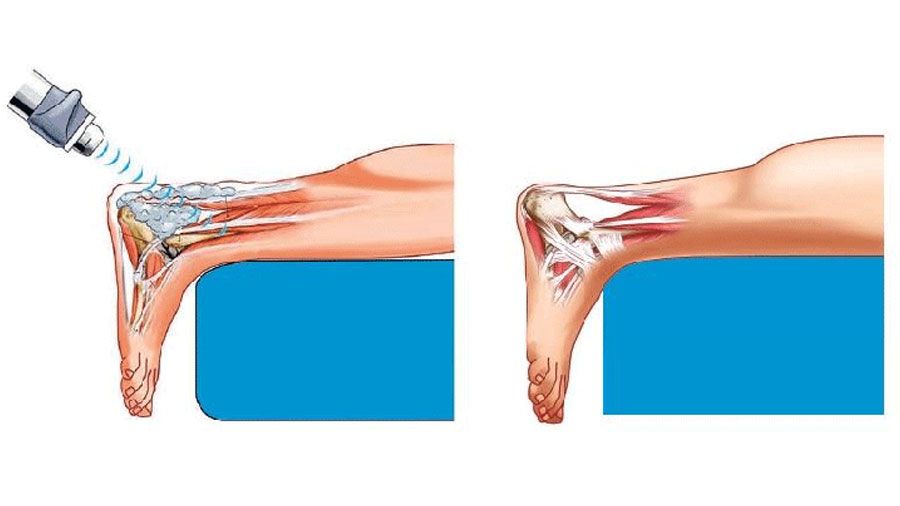
What to Expect During a Shockwave Therapy Session
During a shockwave therapy session, here’s what you can expect:
1. Preparation:
Before the session begins, you may be asked to change into comfortable clothing and to remove any jewelry or other items that could interfere with the treatment. The healthcare professional will then apply a gel or oil to the skin to help conduct the sound waves.
2. Treatment Area:
The healthcare professional will then use a handheld device to deliver high-energy sound waves to the affected area. Depending on the specific condition being treated, the treatment may be focused on a small area or cover a larger region. The healthcare professional may adjust the intensity of the treatment based on your feedback.
3. Sensations:
During the treatment, you may experience some mild discomfort or sensations, such as a tingling or vibrating feeling. These sensations are generally mild and tolerable, and should subside shortly after the treatment is completed.
4. Duration:
The length of each session can vary depending on the condition being treated and the individual patient. In general, sessions typically last between 10-30 minutes.
5. After Treatment:
After each session, you may experience some mild side effects such as bruising, swelling, or numbness in the treated area. These side effects are generally mild and temporary, and should subside within a few days.
6. Number of Sessions:
The number of treatment sessions required can vary depending on the specific condition treated and the individual patient. In general, a series of 3-6 treatment sessions spaced 1-2 weeks apart may recommended for optimal results.
7. Follow-Up:
After the course of treatment completed, the healthcare professional may recommend follow-up appointments to monitor progress and adjust the treatment plan as needed.
Overall, shockwave therapy sessions designed to be non-invasive, low-risk, and effective for a wide range of musculoskeletal conditions. If you have any questions or concerns about the treatment process, it’s important to discuss them with a qualified healthcare professional.
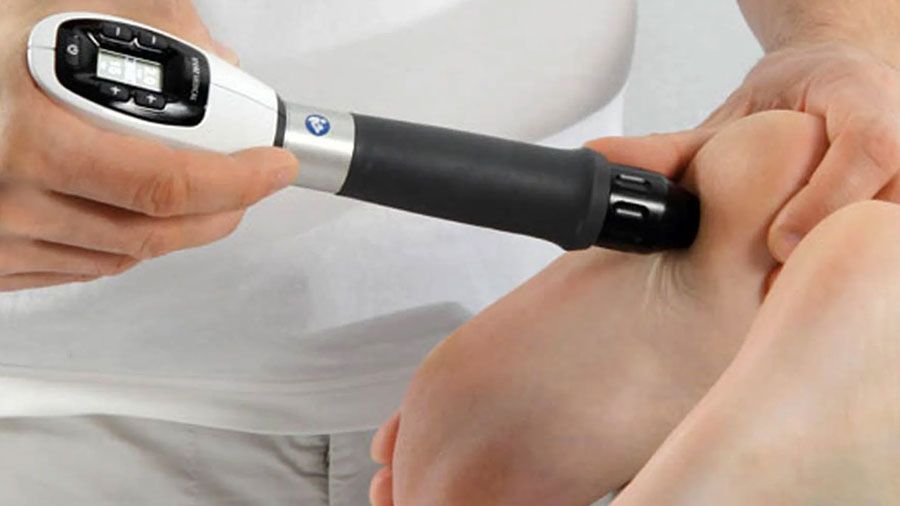
Potential Side Effects of Shockwave Therapy
While shockwave therapy generally considered safe and effective, there are some potential side effects that patients should be aware of. These side effects are typically mild and temporary, and may include:
1. Pain or Discomfort:
Some patients may experience mild to moderate pain or discomfort during or after the treatment. This discomfort is typically temporary and should subside within a few days.
2. Swelling or Redness:
In some cases, patients may experience mild swelling or redness in the treated area. This is usually temporary and should subside within a few days.
3. Numbness:
Some patients may experience temporary numbness or tingling in the treated area. This is generally a normal part of the healing process and should resolve on its own.
4. Bruising:
Some patients may experience mild bruising in the treated area. This is typically temporary and should subside within a few days.
5. Headache:
In rare cases, some patients may experience a mild headache after the treatment. This is usually temporary and should subside within a few hours.
6. Allergic Reaction:
While rare, some patients may experience an allergic reaction to the gel or oil used during the treatment. If you have a history of allergies, it’s important to discuss this with your healthcare professional before undergoing shockwave therapy.
It’s important to discuss any potential side effects or concerns with your healthcare professional before undergoing shockwave therapy. In general, the benefits of the treatment typically outweigh the risks, and most patients experience a significant improvement in their symptoms with minimal side effects.
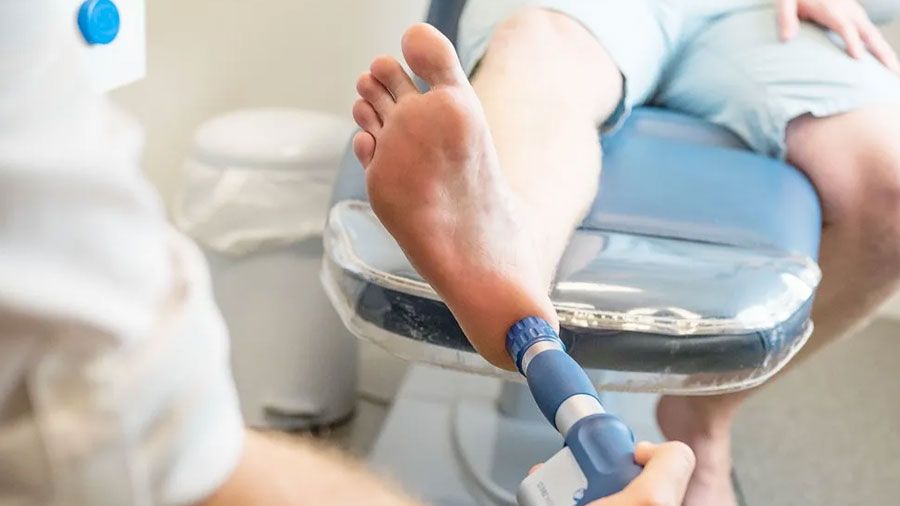
Conclusion
Shockwave therapy is a non-invasive and effective treatment for a variety of musculoskeletal conditions. By using high-energy sound waves to stimulate healing and reduce pain and inflammation, shockwave therapy offers patients a safe and low-risk alternative to traditional treatment methods. While the treatment may cause some mild side effects, these are typically temporary and should subside within a few days. If you’re struggling with a musculoskeletal condition and interested in exploring your treatment options, talk to a qualified healthcare professional to see if shockwave therapy is right for you.
Tags:
- Advantage of Shockwave Therapy,
- Benefits of Shockwave Therapy,
- Electrical Shockwave Therapy,
- Shockwave Therapy,
- Shockwave Therapy Brampton,
- Shockwave Therapy Clinic,
- Shockwave Therapy Cost,
- Shockwave Therapy for Acute,
- Shockwave Therapy for Chronic Injuries,
- Shockwave Therapy Machine,
- Shockwave Therapy Malton,
- Shockwave Therapy near me,
- Shockwave Therapy Orangeville,
- Shockwave Therapy Reviews,
- Shockwave Therapy Sessions,
Recent Posts
All Categories
- Acupuncture
- Arthritis
- Back Pain
- Chiropractic
- Chronic Pain
- Cupping Therapy
- Exercise
- Fibromyalgia
- Headaches
- Health
- Injury Clinic
- Joint Pain
- K Taping Therapy
- Knee pain
- Laser Therapy
- Manual Therapy
- Massage Therapist
- Mental Health
- Neck Pain
- Nerve pain
- Orthotic
- pelvic floor physiotherapy
- Physiotherapy
- Sciatica Pain
- Scoliosis Exercises
- Shockwave Therapy
- Shoulder pain
- Sports Physiotherapy
- VRT



Leave a Comment